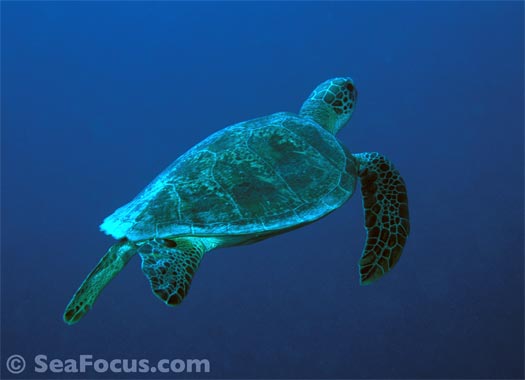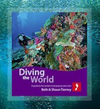 |
|
|
Diving Osprey Reef | The Coral Sea
|
| Australia | |||||||||||||||||
 |
||||||||||||||||||
|
Not many people get the chance to scuba dive on Osprey Reef. Travelling almost due north of Cairns, and well outside the Great Barrier Reef, you eventually encounter this isolated reef system. Separated from Australia's continental shelf by a deep water trough, this long oval atoll was first discovered in 1803. It covers around 100 square kilometres and it's outer walls drop sharply to great depth. They are broken by several deep cuts that lead into a central lagoon but there is no real land and the only inhabitants are a large population of sea birds. What makes this destination a must for divers is that it is one of Australia’s best locations for shark sightings and there are plenty of them. North Horn is the most popular dive site as whitetip sharks, grey whalers and grey reef sharks are common. At different times of year there are also hammerheads and tiger sharks. Schooling pelagics – tuna, mackerel and jacks – are seen frequently as are turtles plus there is the occasional manta ray. |
||||||||||||||||||
| Osprey Reef dive photo gallery | Scuba diving features | |||||||||||||||||
|
||||||||||||||||||
| INFORMATION | EXPLORE | |||||||||||||||||
| PROS and CONS | ||||||||||||||||||
|
Travelling as far as Australia – if you live in Europe or America – means a minimum travel plan of 24 hours followed by a serious bout of jet lag. Make the most of the time once you get there by doing more than just the Barrier Reef itself. Cairns is the starting point for liveaboards to the Coral Sea and trips are usually just few days |
||||||||||||||||||
| SCUBA DIVING | ||||||||||||||||||
|
While the Great Barrier Reef can be crowded, isolated reefs in the Coral Sea are only visited by more considered divers. North Horn at Osprey's northern tip divides the oceanic currents and attracts the most shark life. Hard corals are pristine and some of the soft corals are humungous. Dives at Osprey Reef tend to be deep but the visibility is excellent. |
||||||||||||||||||
| OPINION | ||||||||||||||||||
| Cruising to reach Osprey Reef was worth every Aussie cent and the time it took to get there. The only divers you see will be those you came with, the life underwater is untainted by mass marine tourism. We travelled on Spirit of Freedom which was a very spacious and comfortable vessel with great food and a very professional dive set-up. |
||||||||||||||||||
| MAP | ||||||||||||||||||
|
||||||||||||||||||
|
|
||||||||||||||||||
|
|
||||||||||||||||||















